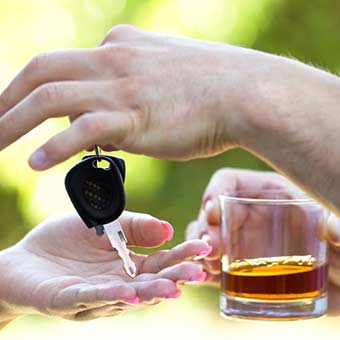
Liability for Serving Alcohol
- July 14
- Evans/Reilley
- Car Accidents Personal Injury
All too often, we see stories about tragic crashes caused by drunk drivers. It’s hard to say why people decide it’s OK to drink and drive. Maybe they don’t realize they’re intoxicated, or they overestimate their own ability to drive while under the influence. But when bartenders recognize that a patron is intoxicated, they may be able to prevent that person from driving drunk.
What the Law Says
Texas law forbids the sale of alcohol to people who are obviously intoxicated to the point that they pose a danger to themselves or others. A bartender or bar-owner that violates that law could be found liable, if a patron causes a crash after leaving a bar.
In 2012, a jury found a Texas bar 75 percent liable for a drunk driving crash, ordering the owners to pay $2.05 million in damages. Witnesses said the man who caused the crash was obviously intoxicated and drinking heavily, before he left the bar near Lytle. Moments later, he died when he caused a head-on collision that seriously injured another motorist. His blood alcohol was more than four times the Texas legal limit of .08 percent.
Bartender Awareness
Alcohol doesn’t affect everyone in the same way. Weight, gender, tolerance, and the presence of other drugs in one’s blood all affect how much a person can drink before being legally intoxicated. And since bartenders can’t administer a breath-alcohol test to their customers, they must rely on their own judgment to determine whether someone has had too much to drink.
The Texas Alcoholic Beverage Commission offers alcohol education classes, but bartenders are not legally required to take them. However, some bar and restaurant operators require servers to participate in alcohol education classes, either as a condition of initial employment, or after they’re hired. The cost of these classes is minimal, and the lessons bartenders learn could ultimately save lives.
Personal Responsibility
Disregarding all other factors that affect how the body processes alcohol, a 120-pound woman who has two drinks in an hour would have a blood alcohol level of .08 percent. Even though she may feel OK to drive, she is legally impaired, according to Texas law.
Drivers need to understand their own limits, as well as how alcohol affects motor skills. A few drinks can impede reaction time, judgment of distance, and create a false sense of confidence – all factors that, together, increase the likelihood of a crash.
The TABC website features a chart that shows typical blood alcohol levels, based on numbers of drinks consumed and body weight. It’s a good resource for people who want to avoid putting themselves and others at risk.
Being responsible doesn’t mean people can’t enjoy a night out on the town. With taxis, public transportation, and car services such as Uber and Lyft, revelers can plan ahead for a ride, and leave the car keys at home.
Reversing a Trend
Drunk drivers cause an alarming number of deaths and injuries every year. Law enforcement tries to reduce those numbers with sobriety checkpoints, and by increasing patrols around holidays. But the problem is too large for police to solve alone. Bartenders can do their part by serving alcohol responsibly. Private citizens can help by understanding the risks of driving under the influence.

 Serving Clients Throughout Texas
Serving Clients Throughout Texas
 Chip Evans is a partner at Evans & Herlihy. Chip brings to the firm more than 20 years of experience as a trial lawyer representing Plaintiffs. It is the desire to help individuals, not corporations, that attracts Chip to this side of the docket. [
Chip Evans is a partner at Evans & Herlihy. Chip brings to the firm more than 20 years of experience as a trial lawyer representing Plaintiffs. It is the desire to help individuals, not corporations, that attracts Chip to this side of the docket. [